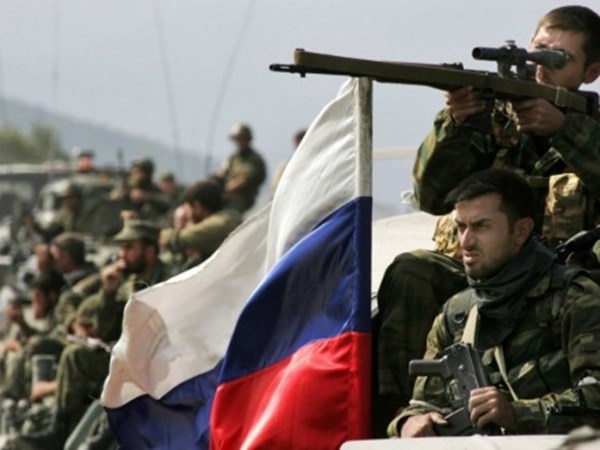Gazeta Wyborcza: Russia is preparing for major military operations
Russia's armed forces are planning to hold about 4000 maneuvers before the end of the year, according to Deputy Defense Minister General Dmitry Bulgakov, Gazeta Wyborcza reports. As early as August 15th, the Caucasus 16 military exercises will be held in the Southern Military District, which is located close to the Ukrainian border.
Russian Defense Minister Sergey Shoygu recently boasted about the strengthening of the force near the Ukrainian borders. According to Shoygu, due to the fact that "the threat from Ukraine and NATO is increasing," the Russian Army formed four new divisions and nine brigades in the southern district. In addition, Moscow decided to place Iskander missiles close to Ukraine. Meanwhile, the naval forces in the region received Bastion and Bal rockets, as well as S-400 Triumf anti-aircraft missiles.
In general, according to Shoygu, units of the Southern District received approximately 4,000 new military vehicles, aircraft and various types of missiles over the past two years.
However, military expert Viktor Murakhovski says that Shoygu is lying when he says about four new divisions are at the border of Ukraine. Only two of them can certainly be called new: the 150th Idritsa-Berlin division, which inherited its name from the division that "70 years ago raised the Soviet flag over the Reichstag" and an air defense division armed with S-400 missiles located in occupied Crimea.
Another two are actually old divisions which had been transformed into air force units as a result of military reform launched in 2008 by then Defense Minister Anatoliy Serdyukov. They have now been returned to their old status in aid of Moscow’s attempts to deploy its armed forces westward.
The Kremlin completely abandoned Serdyukov's plans to prepare Russia for internal conflicts, particularly in the North Caucasus and Central Asia. Divisions and regiments were abandoned. The main combat unit of the Russian army became a brigade of soldiers that consists of three or four motorized infantry battalions, reinforced by their own artillery, communications systems, intelligence units and rear guards. Such teams could act independently on the battlefield without waiting for the support of the main forces.
But today Russia has changed the approach. It returned the divisions and the armies. Russian weekly Vedomosti recently wrote about how Moscow is building its "Ukrainian Front" with reference to Moscow military expert Ruslan Pukhov. The First tank army was established a year ago and placed near the northern border of Ukraine. In the south Russia deploys the 20th army. Moscow also plans to create another new army in the region.
"The purpose of these changes is clear. On the border with Ukraine, which was devoid of troops three years ago, Russia created three major groups of land forces for a surprise offensive in the direction of Kiev, which is located only 270 km from the border. In the south, Russia plans a pincer movement to surround the main forces of the Ukrainian army on the left bank of Ukraine," Pukhov said.
He told Gazeta Wyborcza that in spite of what they say in the West, the mobilization of the Russian Armed Forces near the border of Ukraine is incomparably greater than near the borders of the Baltic States or Poland. "There are no Iskanders now in the Kaliningrad region. The 152nd missile brigade is our only deployed unit. It is armed with old Tochka-U missiles and has not received the new missiles yet," Pukhov said.
Last Friday, all units of the Russian army received a bulletin called "Independent military view." It stated that "Russia does not rule out a major war. Ukraine is becoming our strategic enemy." Supposedly, that is why Moscow sends powerful forces to the Ukrainian border.
Russia also strengthened its positions near the Belarusian border. Since the middle of last year, the 144th Motorized Infantry Division has been stationed near Smolensk. It consists of a tank regiment, three regiments of infantry, an artillery regiment, as well as air and missile defense regiments. In general, about ten thousand soldiers are based there.
Earlier, The National Interest wrote that excessive militarization will only harm the combat abilities of the Russian army because of the insufficient number of reservists and the modest capacity of the Russian economy.
In March, U.S. Secretary of Defense Ashton Carter announced the five global strategic issues for the United States, claiming Russia as the first priority. Meanwhile, the then British Secretary of State of Foreign Affairs, Philip Hammond called Russia a threat and a challenge to the entire world.
